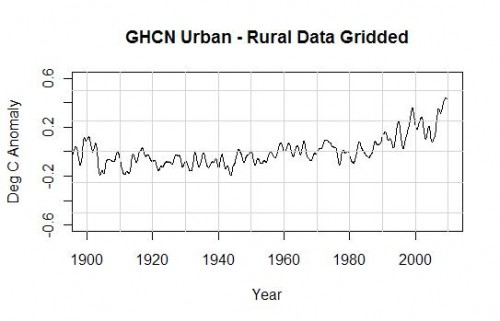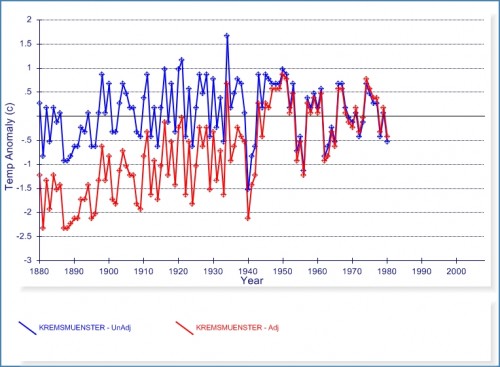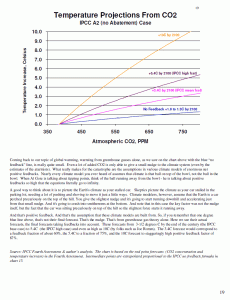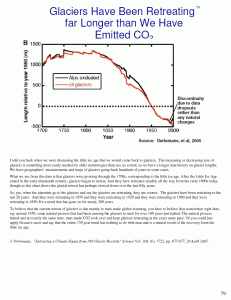When asked what one thing I would want to tell laymen about catastrophic man-made global warming theory, it is the following: That this theory is in fact a two-part theory. Greenhouse gas theory alone only gives us incremental warming and no catastrophe. It is a second theory that Earth’s climate is dominated by strong positive feedbacks that multiplies warming of perhaps a degree over the next century from CO2 to 3,5, or more degrees of warming. And while it is fairly well accepted by all that CO2 will cause a bit of warming alone, this second theory is not at all settled and in fact may even the the sign of the feedback wrong.
Two stories came out this week undercutting to of the largest sources of feedback.
Water vapor is a highly variable gas and has long been recognized as an important player in the cocktail of greenhouse gases—carbon dioxide, methane, halocarbons, nitrous oxide, and others—that affect climate.
“Current climate models do a remarkable job on water vapor near the surface. But this is different — it’s a thin wedge of the upper atmosphere that packs a wallop from one decade to the next in a way we didn’t expect,” says Susan Solomon, NOAA senior scientist and first author of the study.
Since 2000, water vapor in the stratosphere decreased by about 10 percent. The reason for the recent decline in water vapor is unknown. The new study used calculations and models to show that the cooling from this change caused surface temperatures to increase about 25 percent more slowly than they would have otherwise, due only to the increases in carbon dioxide and other greenhouse gases.
An increase in stratospheric water vapor in the 1990s likely had the opposite effect of increasing the rate of warming observed during that time by about 30 percent, the authors found.
2. CO2 (outgassing from oceans) Feedback
The most alarming forecasts of natural systems amplifying the human-induced greenhouse effect may be too high, according to a new report.
The study in Nature confirms that as the planet warms, oceans and forests will absorb proportionally less CO2.
It says this will increase the effects of man-made warming – but much less than recent research has suggested….
The most likely value among their estimates suggests that for every degree Celsius of warming, natural ecosystems tend to release an extra 7.7 parts per million of CO2 to the atmosphere (the full range of their estimate was between 1.7 and 21.4 parts per million).
This stands in sharp contrast to the recent estimates of positive feedback models, which suggest a release of 40 parts per million per degree; the team say with 95% certainty that value is an overestimate.
OK readers, let’s see how close you have been paying attention. The models have over-estimated this important feedback by a factor of 5 (40 to 7.7). As I have shown time and time again, the vast majority of the warming in climate forecasts is from feedback — about 1C per century is directly from CO2, the rest is from feedback multipliers. Have a forecast that says 5C warming in the next century, then about 4C of that is probably due to feedback.
But remember this post, where I said
…there is a very strong social cost in academia to challenging global warming, so that even when findings in certain studies seem to undercut key pieces of the argument, the researches always add something like “but of course this does not refute the basic theory of global warming” at the end of the paper.
So what do this study’s author’s say?
The authors warn, though, that their research will not reduce projections of future temperature rises.
Further, they say their concern about man-made climate change remains high.
Of course, because if this factor goes down, they will just shore up their forecasts and keep them them high with some other plug variable. Because no one is funding scientists (or quoting them in newspapers) whose models call for just 1C of warming over the next century.




